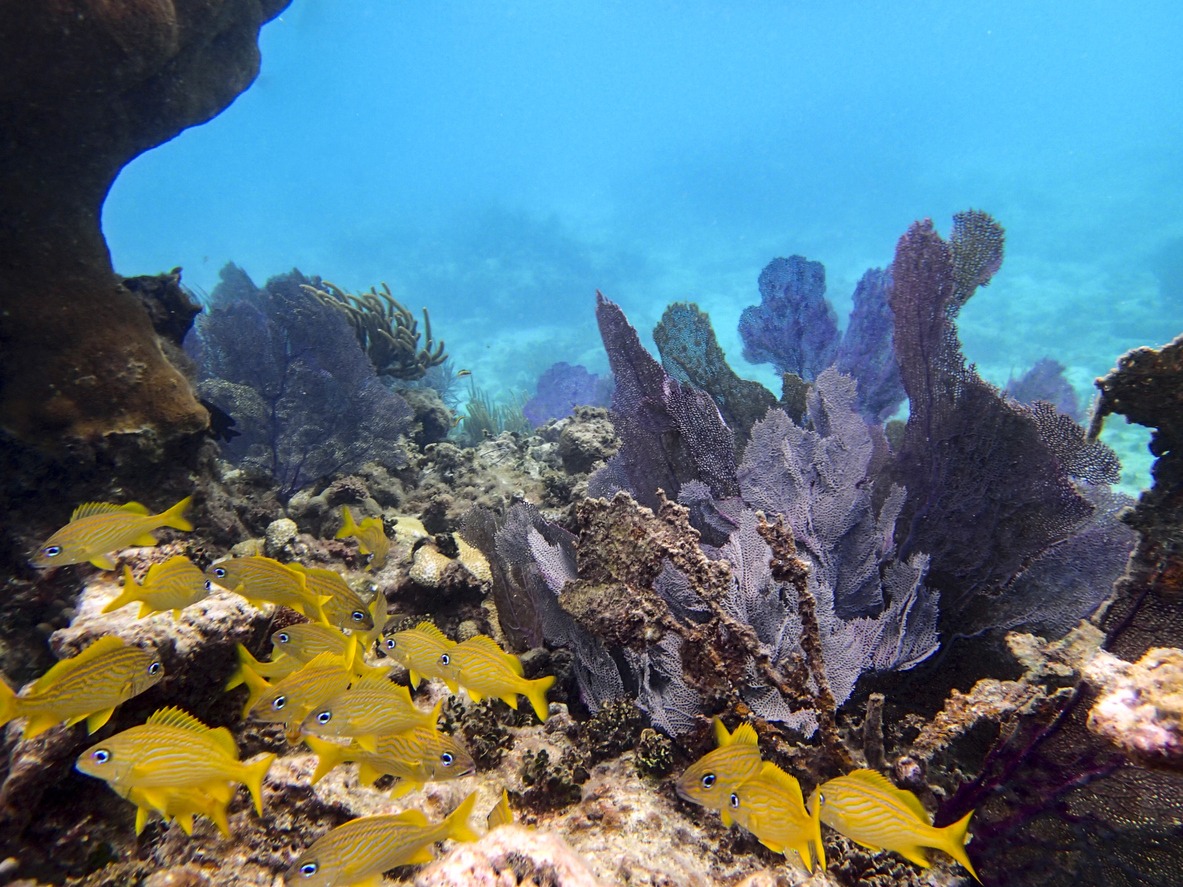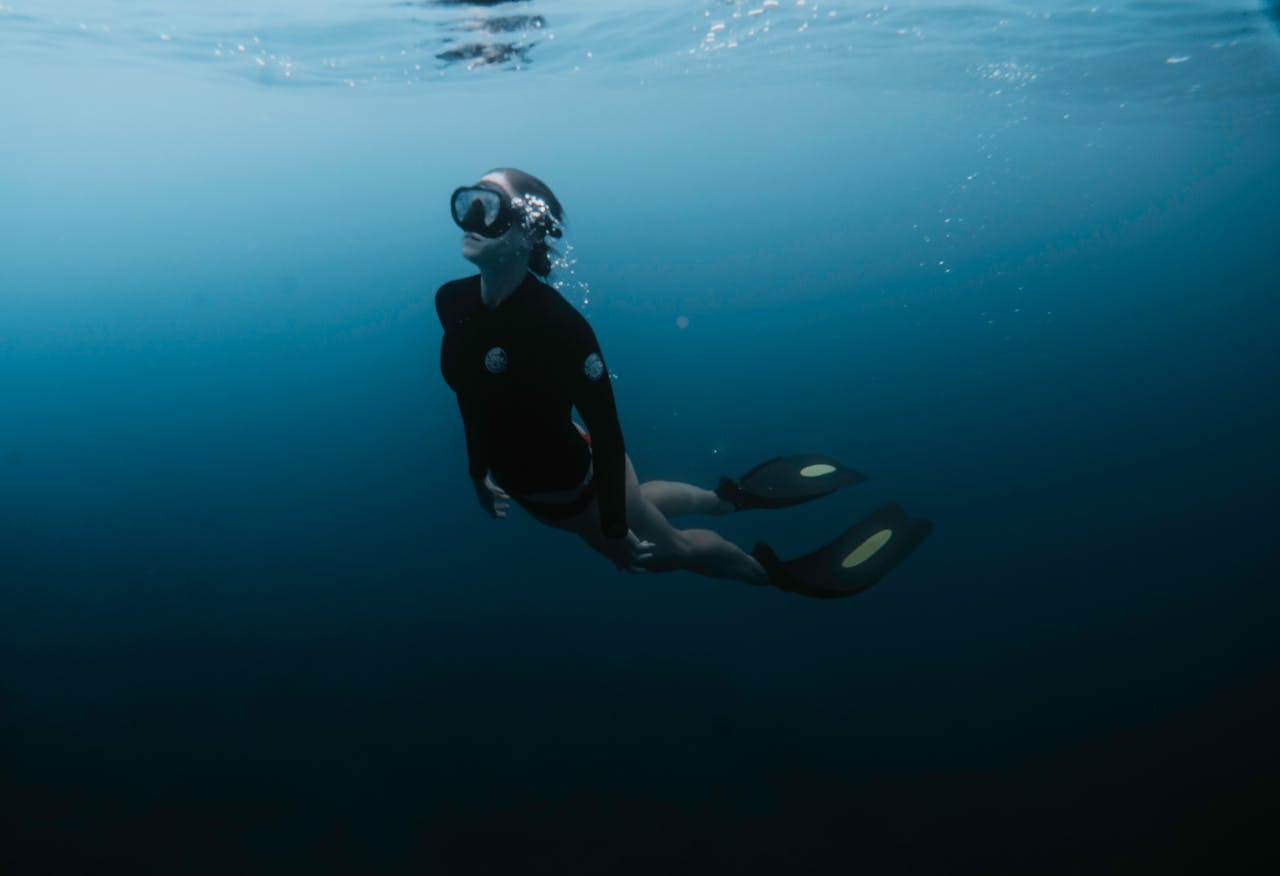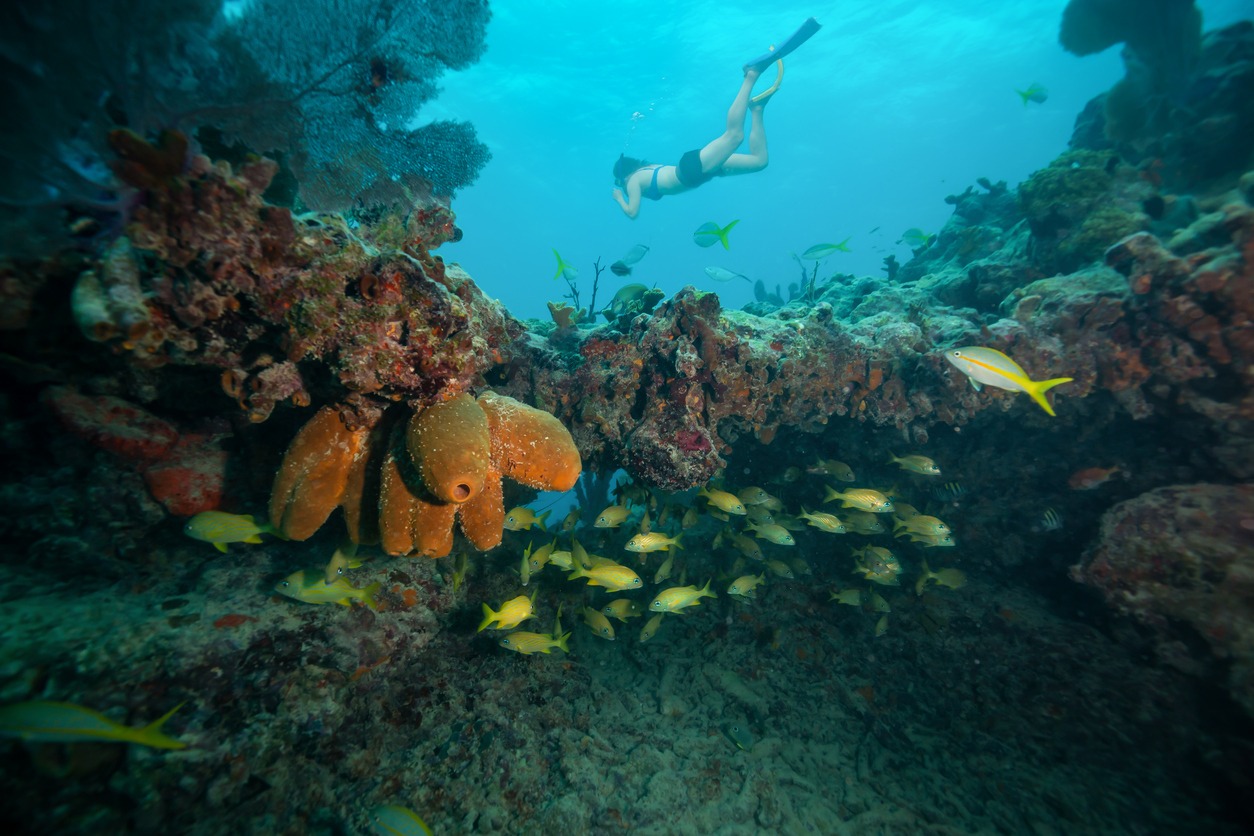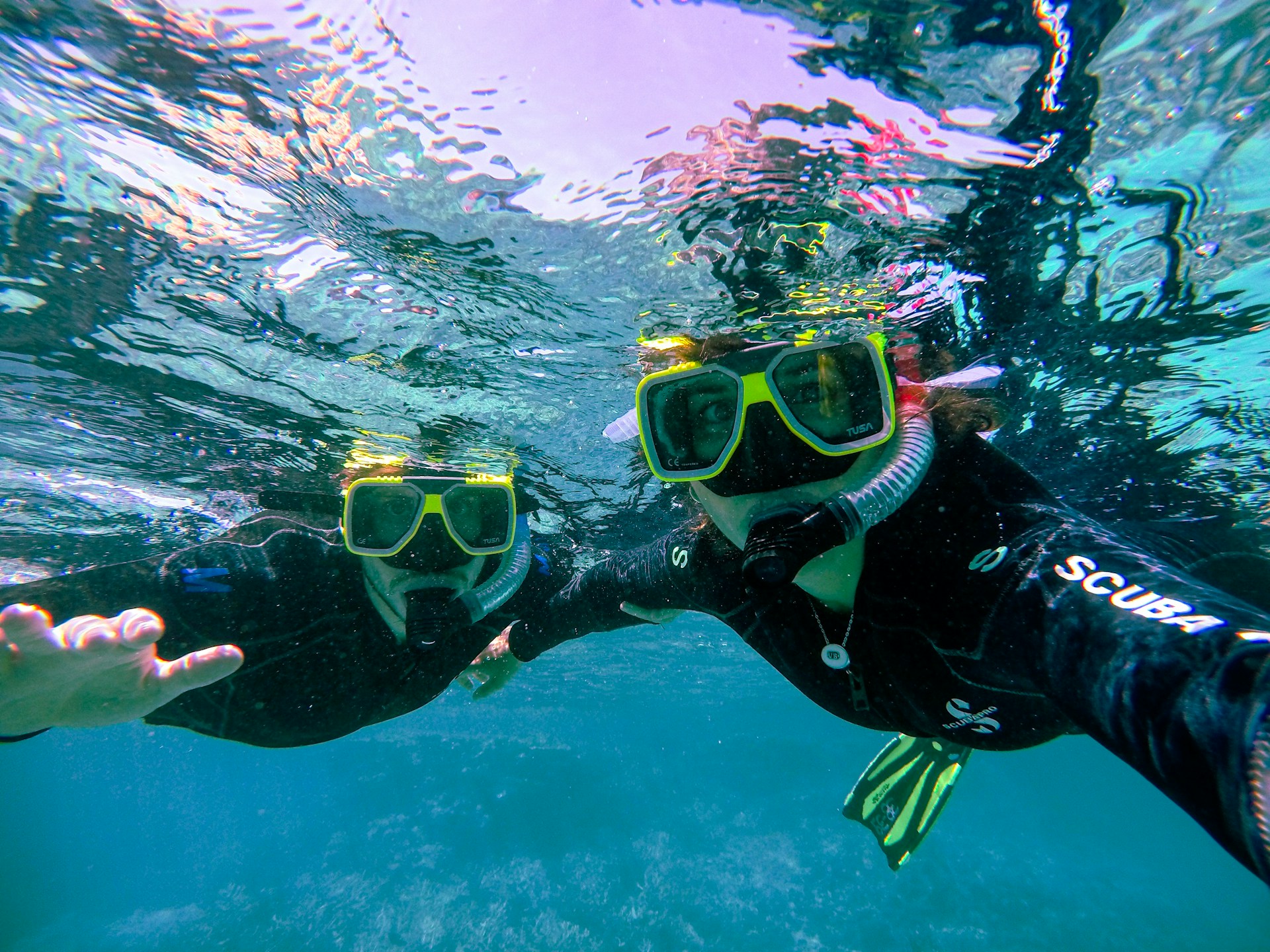Types of Ocean Life You See While Snorkeling: Different Reef Fish and Where to Spot Them
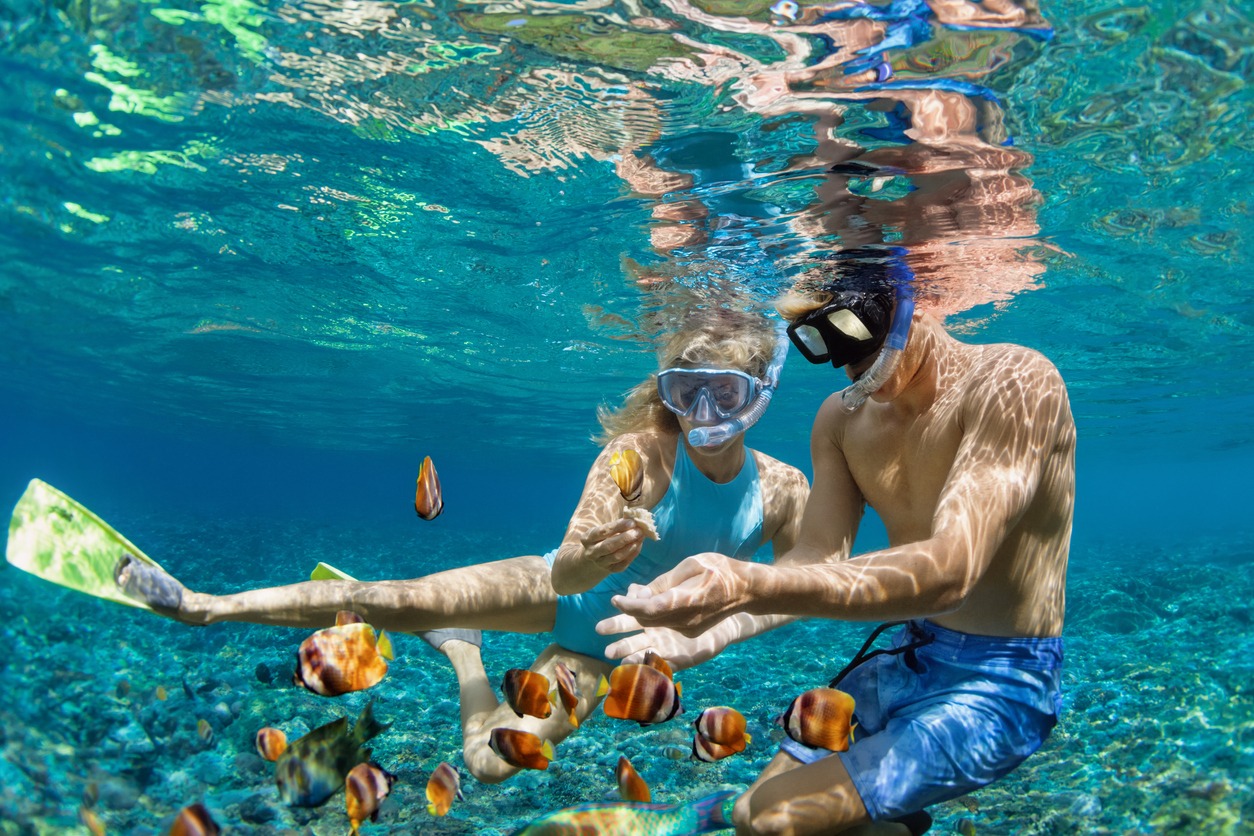
When snorkeling, you'll encounter a lively underwater world filled with diverse marine life. You'll spot vibrant reef fish like butterflyfish, parrotfish, and angelfish darting among coral formations. In Hawaii, you might see endemic species like the millet seed butterflyfish, while Belize's barrier reef hosts queen triggerfish and rock beauty angelfish. Keep an eye out for sea turtles gracefully moving through coastal waters, especially in places like Puerto Rico's Culebra beaches. You may even catch a glimpse of manatees grazing on seagrass or manta rays filter-feeding in shallow areas. These are just a few examples of the fascinating ocean life awaiting your exploration beneath the waves.
Colorful Reef Fish Species
What makes snorkeling so engaging? It's the vibrant underwater world teeming with colorful marine life that captures your attention. As you glide through the water, you'll encounter a diverse array of reef fish species that call these ecosystems home.
Snorkeling in Hawaii allows viewing of unique marine inhabitants, including endemic fish like the millet seed butterflyfish and saddle wrasse. In Belize, the Belize Barrier Reef is one of the richest marine ecosystems on Earth, home to diverse reef fish like the Queen Triggerfish and Rock Beauty Angel Fish.
Keep an eye out for the stoplight parrotfish, easily recognizable by its striking colors. Butterfly fish, with their distinctive patterns, dart between coral formations, while the regal queen angelfish adds a touch of majesty to the scene. These species are just a few examples of the rich biodiversity you'll uncover in coral reef habitats.
To enhance your snorkeling experience, consider using well-illustrated identification guides or community-based platforms. These resources will help you learn about and appreciate the various fish species you encounter. As you investigate, remember that preserving these critical marine habitats is essential for protecting the diverse array of reef fish and other wildlife.
Coral Formations and Their Inhabitants
A living fabric of color and texture, coral formations are the backbone of reef ecosystems. As you snorkel, you'll see these intricate structures teeming with life. Early History of Diving and Snorkeling reveals that people have been practicing diving and snorkeling for over 4,500 years, with sponge diving among Greeks as early as 1000 B.C. Hard corals like brain coral, staghorn, and elkhorn form the reef's foundation, while soft corals like sea fans and sea whips sway with the current.
Coral formations provide shelter and food for countless marine species. Look closely, and you'll spot tiny cleaner shrimp darting in and out of coral crevices. Colorful anemones host clownfish, while moray eels peek out from their coral hideouts. You might even see octopuses camouflaged among the coral polyps.
Pay attention to the reef's topography as you investigate. Overhangs and swim-throughs often hide shy creatures like lobsters and groupers. Coral bommies, isolated reef structures, attract schools of fish and are great spots to observe marine life interactions.
Sea Turtles in Coastal Waters
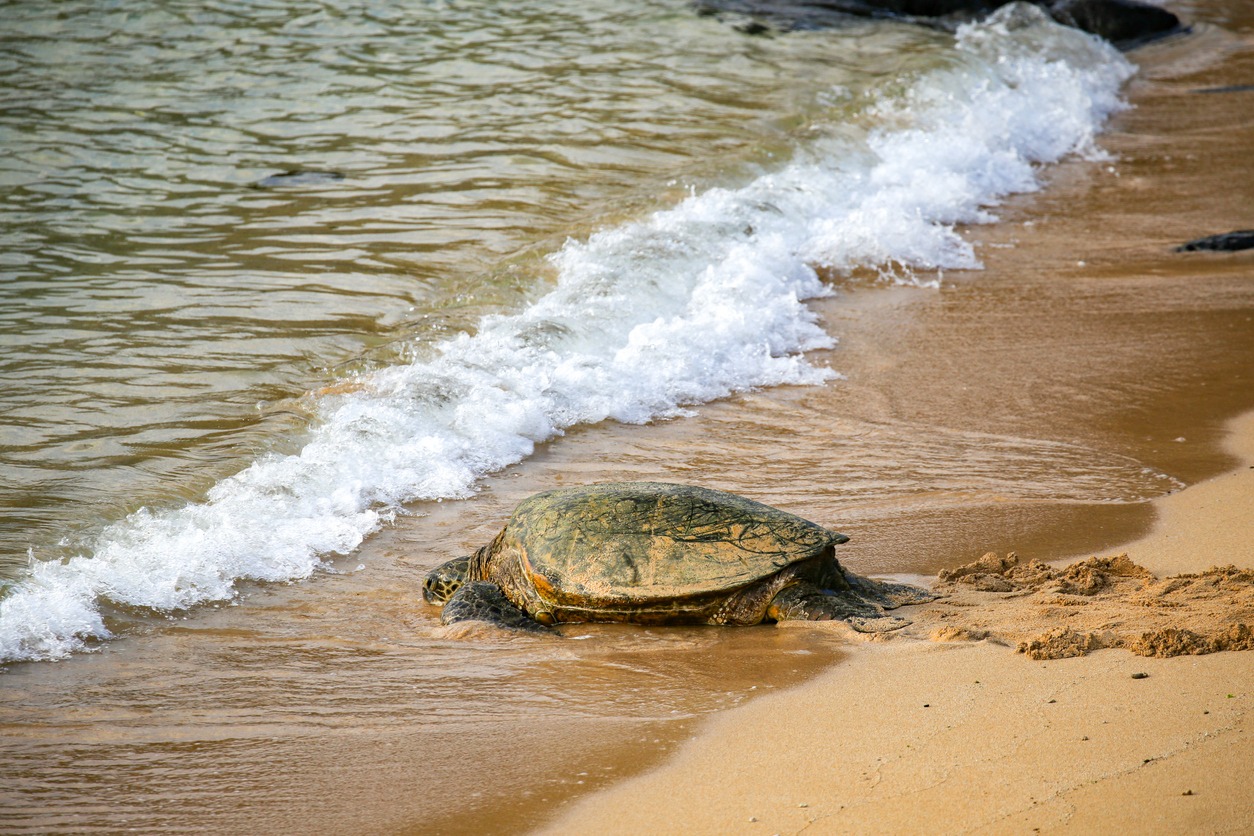
Often, one of the most thrilling sights while snorkeling in coastal waters is encountering sea turtles. In Puerto Rico, you'll have the chance to spot three common species: green, hawksbill, and leatherback sea turtles. These marine reptiles inhabit the island's waters year-round, but you're more likely to see them during their nesting season from February to August.
If you're avid to observe these majestic creatures, head to Culebra's beaches, where you might catch a glimpse of leatherback and green sea turtles. For hawksbill turtles, Mona Island is a prime location. Snorkeling offers an eco-friendly way to admire these endangered species without disturbing their natural habitats.
As you delve into Puerto Rico's coastal waters, keep in mind that sea turtles face numerous threats and are protected by conservation efforts. By choosing responsible snorkeling practices, you're contributing to their preservation. Remember, these ancient mariners play a pivotal role in maintaining the health of marine ecosystems. Your underwater encounter with sea turtles will not only be unforgettable but also a reminder of the importance of protecting these exceptional creatures for future generations to enjoy.
Manatees and Manta Rays
Gentle giants of the sea await your observation in Puerto Rico's coastal waters. As you snorkel along the western coast, particularly in Cabo Rojo and Mayaguez, you'll likely encounter Antillean manatees. These smaller relatives of the Florida manatee can often be seen grazing on seagrass in shallow waters and estuaries. Keep in mind that these endangered creatures rely on protected seagrass beds for their habitat.
For a different kind of marine phenomenon, head to the beaches of Culebra and Vieques. Here, you'll have the chance to spot manta rays gracefully gliding through the water. These elasmobranch relatives of sharks use their wing-like fins to filter plankton, creating a mesmerizing "flying" appearance underwater. Don't worry - these colossal creatures pose no threat to humans.
Both manatees and manta rays offer unique and captivating sightings during your snorkeling explorations in Puerto Rico. By observing these creatures in their natural environments, you'll gain a deeper appreciation for the diverse marine life that calls these waters home. Remember to respect their habitats and follow conservation guidelines to help protect these marvelous species for future generations to enjoy.
Echinoderms on the Ocean Floor
Snorkeling in Puerto Rico's waters frequently reveals a fascinating world of echinoderms on the ocean floor. As you glide over the reef, you'll encounter an array of sea stars, sea cucumbers, and sea urchins, each playing a unique role in the underwater ecosystem.
Sea stars, often called starfish, are among the most enthralling creatures you'll spot. They come in various shapes, sizes, and colors, with some species boasting up to 40 arms. You'll likely see five-armed sea stars on tropical reefs, some of which feed on coral polyps. If you're lucky, you might witness their exceptional ability to regenerate lost arms.
Sea cucumbers, though less eye-catching, are equally intriguing. These slow-moving echinoderms use tentacle-like tube feet to crawl along the ocean floor, feeding on organic matter. Meanwhile, sea urchins graze on algae, creating space for coral growth.
To make the most of your snorkeling experience:
- Look for sea stars in crevices and under ledges
- Scan the sandy areas for sea cucumbers
- Keep an eye out for sea urchins nestled among the corals
Molluscs Among the Reefs
As you hover above the lively coral formations, you'll encounter a diverse array of molluscs that call these underwater panoramas home. During your snorkeling excursion, you'll spot various species, including mussels, clams, snails, slugs, and even the occasional octopus. These invertebrates play pivotal roles in the reef ecosystem, contributing to the food web and nutrient cycling.
Many molluscs have adapted to reef life, developing protective shells or camouflage abilities to survive in this vibrant environment. Keep your eyes peeled for colorful nudibranchs, small sea slugs with elaborate external gills that add a splash of beauty to the reef.
As you investigate, you might come across giant clams or the elusive chambered nautilus. These species are highly prized by collectors, which has unfortunately led to conservation concerns. By observing these creatures respectfully during your snorkeling journey, you're contributing to their preservation.
Remember that molluscs are an integral part of the reef ecosystem. Their presence indicates a healthy marine environment, so spotting them during your swim is a sign that you're exploring a thriving underwater world.
Dolphins and Other Marine Mammals
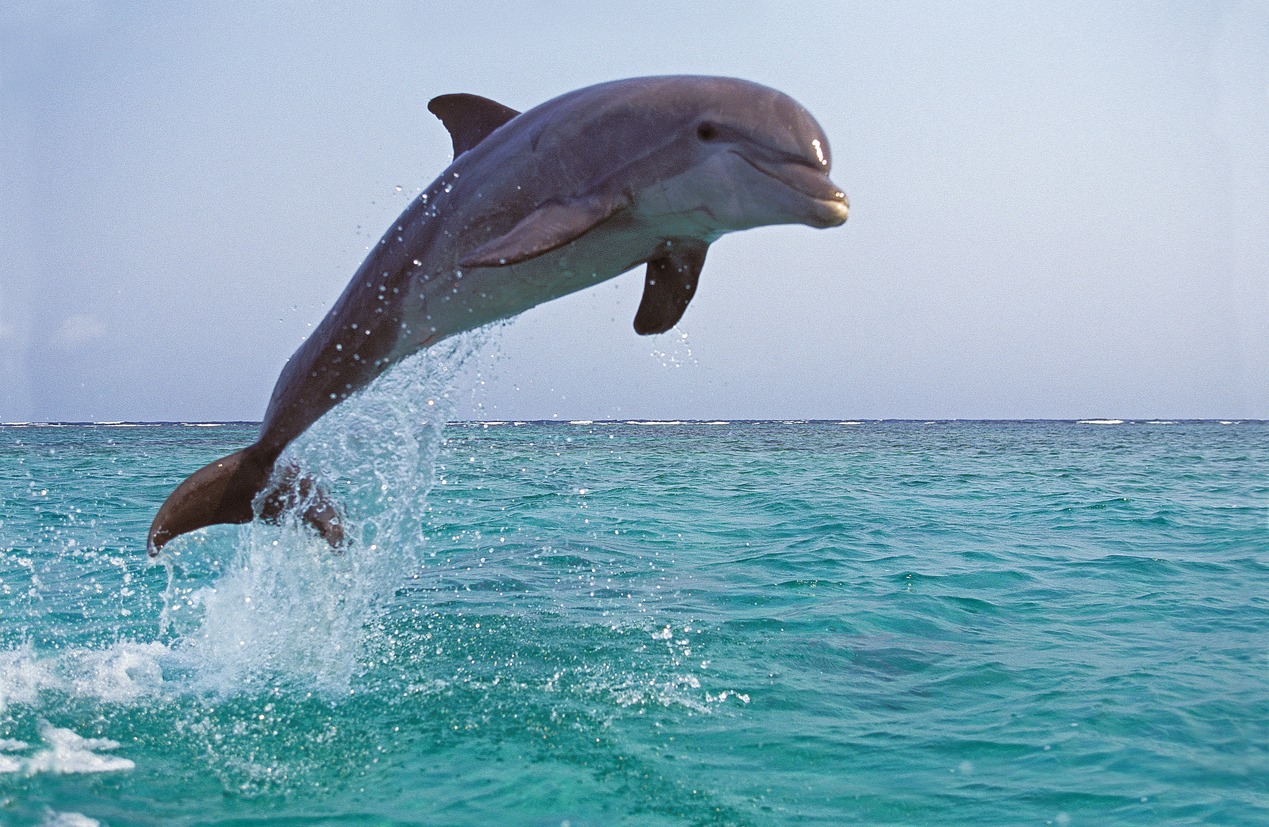
Gliding through the crystal-clear waters, you might encounter some of the ocean's most charismatic inhabitants: dolphins and other marine mammals. These friendly and enthusiastic creatures are known to approach humans, often seeking playful interactions. While it's tempting to reach out and touch them, it's pivotal to maintain a respectful distance and observe them quietly.
To make the most of your dolphin encounter, keep these tips in mind:
- Remain calm and relaxed, allowing the dolphins to approach you if they choose
- Avoid following, touching, or feeding the dolphins to prevent causing them stress
- Observe their natural behaviors from a safe distance, enjoying their presence without interference
Dolphins are intelligent and social marine animals that can provide an unforgettable experience for snorkelers. Their playful nature and curiosity make them a joy to watch as they swim gracefully through their habitat. Remember, while they may seem approachable, it's essential to prioritize their well-being and natural behaviors. By respecting these magnificent creatures and their environment, you'll contribute to their conservation while creating lasting memories of your underwater endeavor.
Best Snorkeling Spots for Wildlife
Puerto Rico's diverse marine ecosystems offer some of the best submerge spots for wildlife enthusiasts. You'll find an array of different species, plants, and animals in the waters surrounding this Caribbean paradise.
For an unforgettable snorkeling experience, head to Culebra and Vieques islands. Here, you'll encounter sea turtles, manta rays, and lively reef fish in their natural habitat. If you're keen on observing endangered species, Mona Island's protected marine sanctuary is the place to go. You'll have the chance to spot the rare hawksbill sea turtle among other underwater creatures.
Tres Palmas Marine Reserve in Rincon boasts abundant coral formations and tropical fish species, making it a must-visit spot for snorkelers. For a unique encounter, immerse Cabo Rojo and Mayaguez on Puerto Rico's western coast, where you might see the endangered Antillean manatee grazing in seagrass beds.
Don't miss La Parguera in southwestern Puerto Rico, known for its healthy coral reefs teeming with diverse marine life. This exceptional snorkeling destination showcases the rich biodiversity of Puerto Rico's underwater world, offering you a front-row seat to nature's aquatic wonders.

